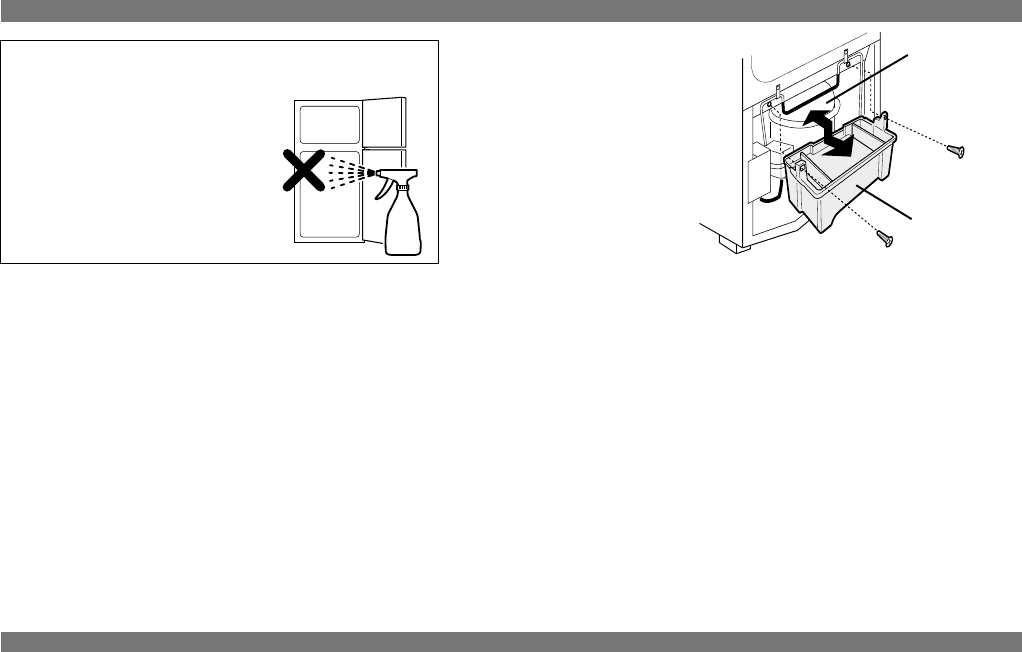
7
CARE AND CLEANING
Some household cleaning chemicals may affect
the inside surfaces and plastic shelves resulting
in splitting or cracks occurring.
Evaporating pan;
How to remove/set
Remove the two screws
to take the Evaporating
pan off. Please pay at-
tention to the safety
since the compressor is
very hot.
NOTE:
Switching off your refrigerator
If you switch your refrigerator off when you are going away for
an extended period, remove all food, clean the interior thoroughly.
Remove the power cord plug from the power socket and leave
all doors open.
1.Remove the shelves and pockets from the cabinet
and door. Wash them in warm soapy dishwashing
water; rinse in clean water and dry.
2.Clean the inside with a cloth soaked in warm soapy
dishwashing water. Then, use cold water to wipe
off soapy water.
3.Wipe the exterior with a soft cloth each time it is
soiled.
4.Clean the Magnetic door seal with a toothbrush and
warm soapy dishwashing water.
5.Whenever the refrigerator is moved to clean or re-
positioned, the Evaporating pan should be removed
and cleaned.
• Do not use polishing powder, benzine, hot water etc.
• If undiluted detergent is used or soapy water is not wiped off
thoroughly, cracking of plastic parts can result.
• Wipe any food oils adhered to plastic components as they can
cause cracking of the plastic surface.
When cleaning all plastic
parts inside this refrigerator,
only use diluted dishwashing
liquid(soapy water). Make
sure that all plastic parts are
thoroughly rinsed with water
after cleaning.
WHAT TO DO BEFORE YOU CALL FOR SERVICE
Before you call for service, check the following point .
IT IS NORMAL for the refrigerator to produce the
following sounds.
• Loud noise produced by the compressor when op-
eration starts --- Sound becomes quieter after a while.
• Loud noise produced once a day by the compressor
--- Operating sound produced immediately after au-
tomatic defrost operation.
• Sound of flowing fluid (gurgling sound, fizzing sound)
--- Sound of refrigerant flowing in pipes (sound may
become louder from time to time).
• Cracking or crunching sound --- Sound produced by expan-
sion and contraction of inner walls and internal parts during
cooling.
• Squeaking sound --- Sound produced by expansion and con-
traction of internal parts.
IT IS NORMAL that the outside of a cabinet may be hot when
touched. The hot pipe is in the cabinet in order to prevent dew
generation.
Refer to your nearest service agent approved by SHARP.
IF YOU STILL REQUIRE SERVICE
Evaporating
pan
Compressor







